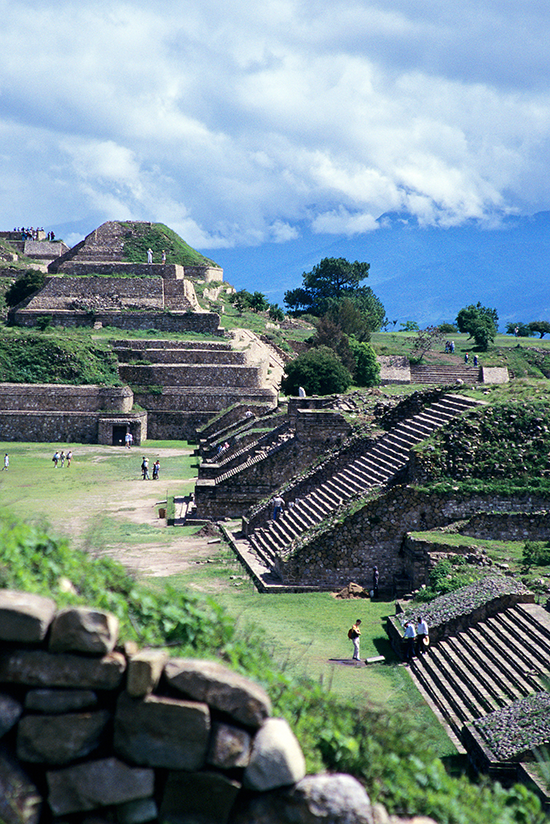Explore the Kingdom of Monte Albán in Mexico

This archeological site close to the city of Oaxaca was the most important pre-Colombian capital in the area. Come and discover it with us!
As was common in many pre-Colombian cities, Monte Alban was inhabited by more than one cultural group. However, the identity of the first inhabitants is subject to some debate amongst archeologists and historians.
Between 400 and 800 b.c. this site was the most important city in the valleys of Oaxaca state and was inhabited by the Zapotec people. At this time, the area was named “Dani Baá” or Sacred Mountain. Later, towards the 7th century, the site was baptized “Yucucui” (Green Hill) by the Mixtecs, another group who lived in the region.

Interestingly, after having studied the architecture of Monte Albán, experts discovered that the city also had contact with other towns, mainly the powerful Teotihuacán, in the center of the country. Today it is known that most of the temples and buildings remaining belong to the Zapotec period of occupation.
Monte Albán was built on the top of a hill, and is made up of three main structures, all of which had mostly ceremonial functions. Firstly, the Plataforma Sur (South Platform) is a two-bodied construction and the highest in the ancient city. The view from here gives visitors a wonderful vantage point over the rest of the site. The Mesoamerican ballgame court, a space dedicated to the practice of this ritualistic pre-Colombian sport, and finally the Plaza de los Danazantes, a one of a kind construction with a stele of calendrical and anthropomorphic glyphs.

One of the site’s most important constructions is the Gran Plaza, located in the heart of the ancient ceremonial center, and which according to experts, served as a type of terrace on which a market could be set. In the surrounding area, you will find various temples and a number of residences which were reserved for the governing class.
The Plataforma Sur, meanwhile, is the tallest construction in Monte Alban at 40 m (131 ft) high and is easily identified by its two bodied-façade and the steles of Zapotec glyphs inside.
In the Juego de Pelota Grande, the traditional Mesoamerican ballgame was played, although perhaps “play” is not really the word. The event always had more solemnly symbolic rather than sporting ends, and was supervised and overlooked by priests or governors.

One of the oldest buildings on the site is the Edificio de los Danzantes (or Building L), which stands out due to its steles covered in glyphs and carvings of people in intriguing positions. Today, we know that these glyphs were carved to represent the military might of the city. There are also other steles with calendric and numeric glyphs.
Other interesting buildings not to be missed on your visit to Monte Albán are El Palacio (The Palace) with 13 bedchambers, building P, from where ancient civilizations gazed at the stars. Also, don’t miss tombs 103 and 104.

More info on Mexico: here.
